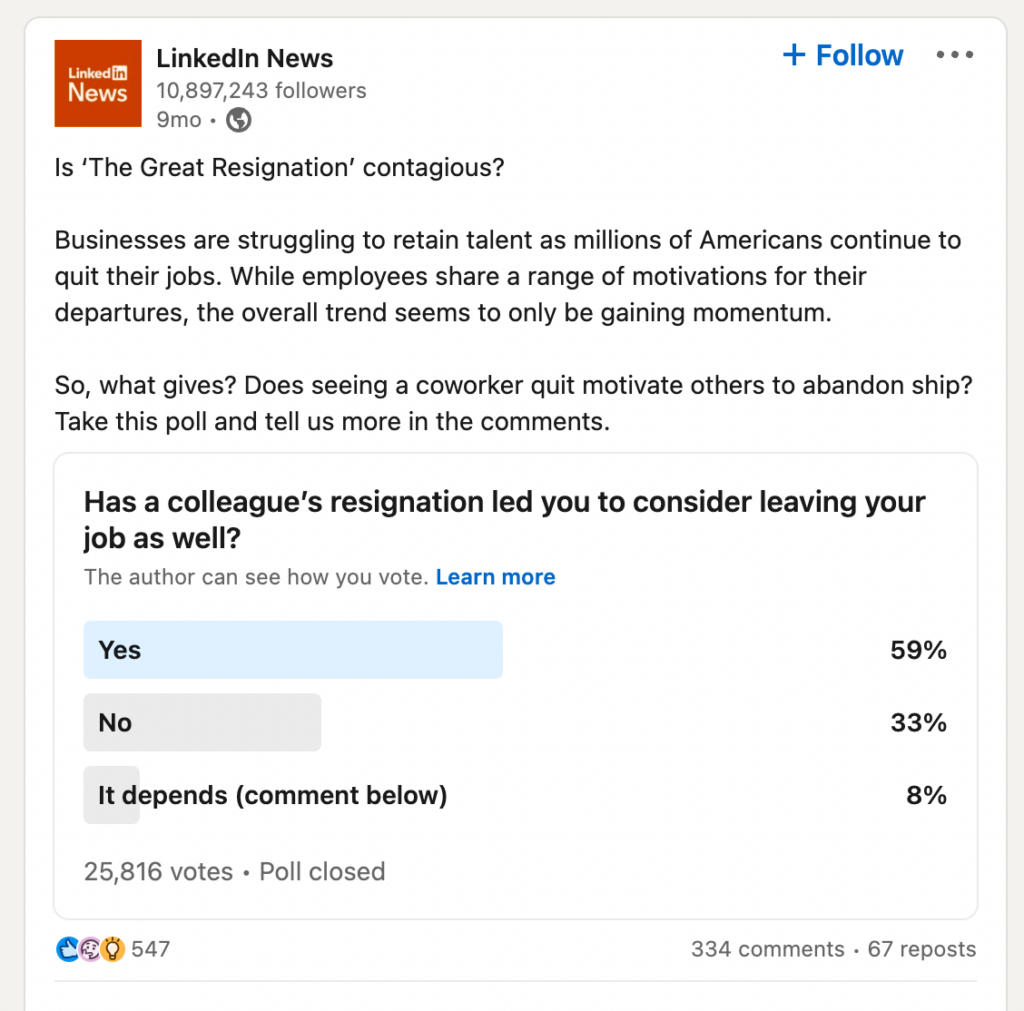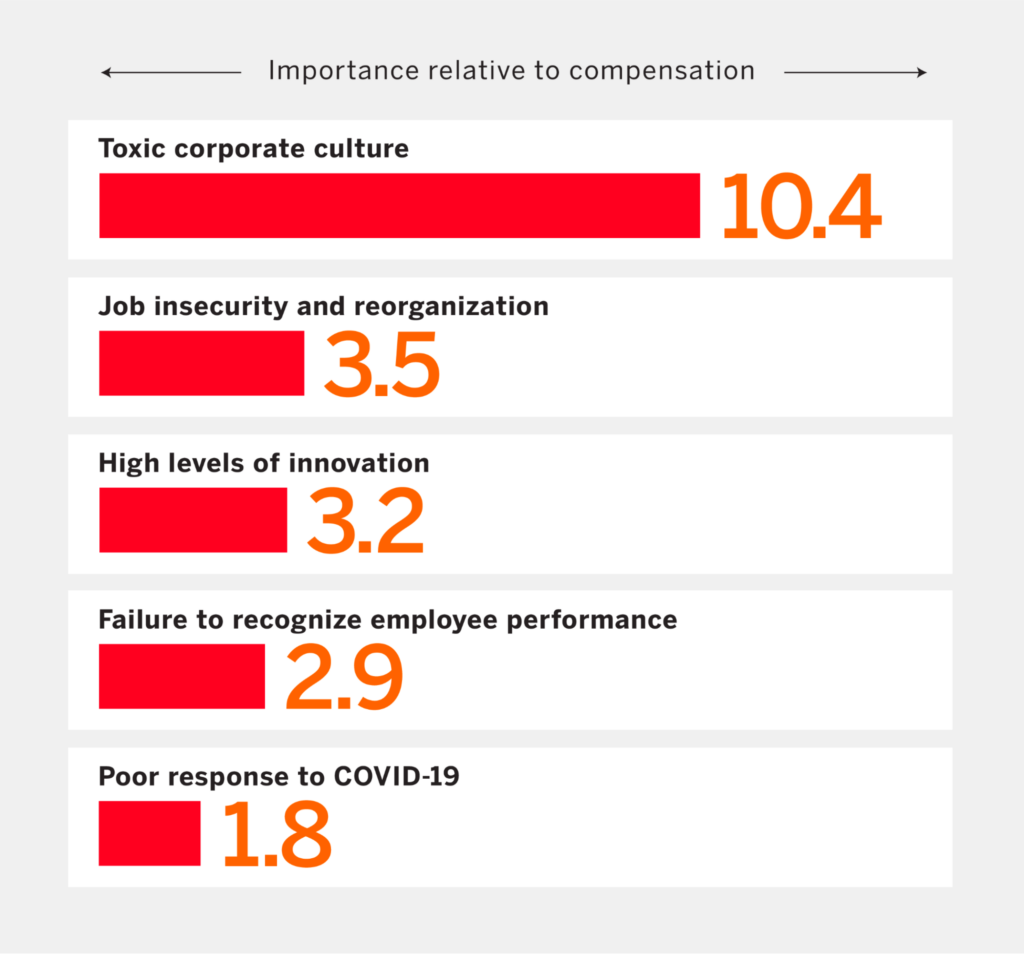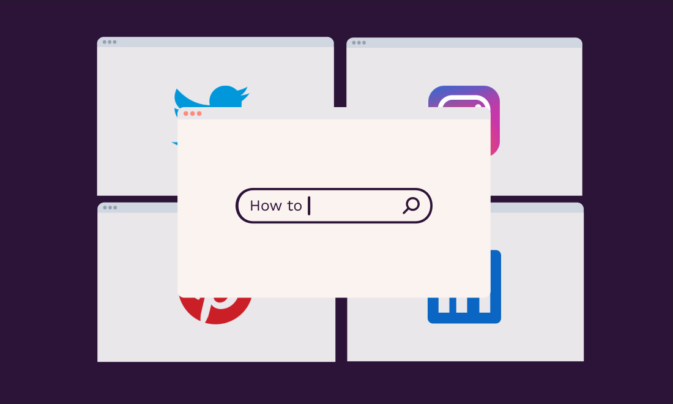If you’re not planning to quit your job, do you even have one?
Jokes aside, the job market remains in flux. The Great Resignation may be officially over, but not for all workers. The number of CEO departures in the US increased twofold between August 2022 and August 2023, with 1,425 people leaving the companies.
Likewise, 38% of Gen Z and 37% of Millennial workers want to leave their jobs in 2024. Moreover, another 40% of companies plan to lay off staff this year. In the first months, we’ve already seen job cuts from Amazon, Alphabet, Walt Disney, IBM, eBay, and Wayfair, among others.
If you’re knee-deep in decoding the latest talent trends and aiming to sync them up with your employee turnover rate to make better decisions, this guide provides some answers.
TL; DR — Key Takeaways
Employee turnover refers to the volume of people who leave your company, whether voluntarily or due to termination. Expressed in percentages, the number helps better understand how well you retain people.
Average employee turnover rates vary by industry and role. Average employee turnover rates hoover at 10% for roles in customer service, marketing, and sales, while managerial, creative, design, and educational roles have an average turnover rate of under 5%.
Knowing your company’s turnover rate is important because it manifests into bigger problems for the business: loss of skills and knowledge, inability to pursue more ambitious projects or attract top talent. High employee turnover also equals higher hiring and operating costs.
Reasons behind high employee turnover vary but mostly boil down to low pay and missing benefits, lack of career advancement opportunities, poor work-life balance, skills mismatches, and bad management, among other factors.
To improve employee turnover rates, consider revisiting and increasing your compensation packages, adding more professional training programs, addressing cultural kinks, and refreshing your hiring practices.
What is employee turnover?
Employee turnover rate is the number of people you hire versus those who leave your organization within the tracked timeframe.
An annual turnover rate factors in dismissals, layoffs, retirements, and resignations but doesn’t include internal mobility transitions, such as getting a promotion or moving to another position.
Most companies calculate employee turnover rate monthly or annually to better understand talent trends and optimize workplace planning.
Employee turnover vs. employee attrition
Turnover rate measures the frequency of employee departures and their replacement by new hires. It’s expressed as a percentage rate of the total workforce size divided by the number of employees who left and multiplied by one hundred.
Attrition is a recruiting metric that indicates a reduction in your workforce size when vacated positions aren’t filled. To calculate attrition rates, divide the average number of recent separations by the number of employees remaining. An attrition rate of 10% to 15% is normal for most organizations.
| Employee turnover rate shows you how many people leave your company and get replaced by new hires. | Employee attrition rate describes the changes in the size of your workforce over time. |
| Helps: ✅ Measure employee engagement and job satisfaction levels ✅ Evaluate recruitment effectiveness ✅ Improve workplace culture and employer brand | Helps: ✅ Identify knowledge drain and skill erosion ✅ Optimize organizational structure ✅ Improve capacity and succession planning |
Voluntary turnover vs. involuntary turnover
Voluntary turnover occurs when an employee leaves on their own instead of being fired or made redundant. That’s not always a bad sign, though. Employees leave jobs for personal reasons like relocation, going back to school, or switching to self-employment.
If your voluntary turnover rates spike above 10%, you should start looking for reasons why — potential red flags include low employee engagement, a desert of career growth, management mishaps, or a pathetically low paycheck.
Involuntary turnover is when the organization dismisses employees, either as part of a major layoff or because someone’s performance is about as impressive as a deflated balloon. 🎈
Layoffs and terminations may seem like an “easy” solution to some bad hires or other internal issues. But remember: the average cost to hire a new employee is $4,700 and can go into five digits for more senior and harder-to-fill positions. Plus, another $1,200 on average in training costs.
So, it literally pays to keep both voluntary and involuntary turnover rates low.

Why your employee turnover rate matters
Across the world, business leaders name “lack of skilled staff” as the main barriers to faster delivery of goods, net-zero transformations, all sorts of digital initiatives, and general business success.
When employees quit you have fewer hands on deck, meaning others have to shoulder the workload. This, in turn, decreases team morale and employee productivity and ultimately hits your bottom line.
Even if you have a fast recruitment cycle and can fill positions quickly, it still takes 12 months on average for a new employee to reach their full potential in the role. Whether they leave you before or after they start becoming fully productive, the damage can be pretty devastating.
By losing workers you also lose knowledge. Over a third of employers in the US, the UK, France, and Germany say that retired employees take away important business acumen with them, and 60% struggle to replace these with people who have equivalent skills.
The rest of the team can be also de-motivated by losing “one of them,” regardless of the reason. Case in point: When Sam Altman was temporarily removed from the CEO position at OpenAI, over 500 employees threatened to quit.
According to a LinkedIn poll, seeing a coworker leave motivates others to also consider their options. High voluntary turnover rates should be an alarm for your human resources department.

Involuntary turnover (aka layoffs) may be better planned by your HR, but it can be equally damaging.
According to research, companies experienced a 31% increase in the number of employees who quit a year after the workforce was reduced by 1%.
Your employer brand also takes a massive hit, and workers get disillusioned about your employer value proposition, especially if they have a strong focus on “transparent communication,” “team-building,” and other “people-first” principles.
Fewer qualified people will enter your talent pipeline, increasing the time and cost-to-hire.
The bottom line? High employee turnover undermines team morale and performance levels, reduces your capacity to generate new value, and can trigger more quitting if left unaddressed.
Employee turnover rate statistics for 2024
According to the US Bureau of Labor Statistics, the national average employee turnover rate stood at a healthy 3.4% last year. That’s close to pre-pandemic (and pre-Great Resignation!) levels. However, staff turnover levels differ across industries and countries.
How many employees plan to quit in 2024?
Staff turnover will be on the rise this year. Employers will face more resignations as workers’ confidence in the company’s leadership and general work satisfaction decreases, leading to lower employee retention.
According to various sources:
In the UK, 20% plan to quit their job in 2024. In the US, 23% share the same sentiment.
Over three-quarters of workers are either actively or passively job searching, and another 48% are open to exploring a new opportunity.
The top factors driving the search for a new job are higher pay, more professional development opportunities, and a better work-life balance.
Globally, employees are most likely to quit due to poor management and stay for the good one. Great managers can drive a 72% decrease in employee attrition and a 13.9X increase in employee satisfaction, according to BCG.

So, what’s a good employee turnover rate?
In short, anything below the national and industry average is a good figure to aim for. As for the longer answer — it depends on several factors, including your industry, the role you‘re hiring for, and the size and structure of your company.
Ultimately, your goal should be to keep the employee turnover rate as low as possible and above industry standards.
Always assess employee turnover in context.
What makes a healthy employee turnover rate for one industry may be abysmally high for another. Certain industries like hospitality, retail, or agriculture traditionally have higher employee churn.
Likewise, employee turnover may be higher in one year (for example, as a company undergoes restructuring or cuts some redundant roles).
To get meaningful insights, benchmark your employee turnover data across businesses in a similar industry and of similar size. You should also reflect on this metric in the wider context of workforce planning activities.
How to calculate employee turnover
Knowing your company’s turnover rate is as important as a Wi-Fi password at a tech conference — and here’s how to calculate it.
Step 1: Gather the data
To calculate employee turnover rate, whether measuring it annually or monthly, you’ll need three data points for the tracked time period:
Number of employees at the beginning of the specific period
Number of employees at the end
Total number of employees that left
Most HR software platforms have these numbers. Or you can do a tally in a spreadsheet.
Step 2: Divide and multiply
To calculate turnover rate, apply a simple formula:
Divide the number of departed employees by the average number of employees who left.
Then, multiply the result by 100 to get the turnover rate in percentages.
Let’s calculate the annual turnover rate for the design team at Cool Startup. Three employees left the team last year, and five new employees were hired. The team’s size was 25 people during the year, and 3 divided by 25 and multiplied by 100 equals an average turnover rate of 12% per year.
You can also estimate the monthly turnover rate using the same formula.

What causes high employee turnover?
Surprised by your monthly employee turnover rate, or even your annual percentage? While some parts of high turnover rates can be explained by the industry (relying on temporary workers or fierce competition for talent), there may be other reasons causing employees to leave.
Low salary
Generally, 36% of workers name “inadequate compensation” as the reason for quitting. This rises to 52% among female workers who often experience gender pay gaps and are less likely to negotiate salaries in the first place.
Workers who are underpaid are less productive, and since the 1980s, the gap between typical workers’ pay and productivity has been widening. Although workers became 62% more productive, hourly pay increased by only 17.5% over the past four decades (after adjusting for inflation), according to the Economic Policy Institute.

On the other hand, fair, competitive, and transparent pay can be motivating for employees, studies suggest. Fair pay also shapes the perception of your company. According to BambooHR’s 2023 compensation report, 82% of workers view some form of salary and benefits transparency as essential when evaluating potential employers, up from 69% in 2022.
Lack of benefits
While some employees want higher base pay, others are interested in better benefits like retirement plans, flexible PTO, and health insurance, as well as less traditional benefits like access to mental fitness programs or lifestyle spending accounts (something we offer at all Toggl companies!).

Comprehensive benefits improve employee retention and job satisfaction. Good health insurance means fewer absences due to health issues and thus lower productivity. Childcare services make your company more attractive to working parents. Mental health services — to people with special cognitive needs.
On the other hand, the absence of good benefits progressively drives people away. In fact, many workers are ready to accept a pay cut if the new job comes with better healthcare benefits (59%), work-life balance (52%), or fully remote work (45%), for example.
No career growth opportunities
While many companies list “ample career development opportunities” as a perk in their job ads, very few actually walk the walk and give their employees a chance to move up the ranks.
A Nectar survey found that 7.63% of workers haven’t been promoted in 5+ years, and another 14.25% never got an official title change.
To prevent undesirable turnover, develop clear career paths for different roles and promotion avenues. Buffer, for example, has a transparent salary system based on market data and internal benchmarks. Anyone can see how the pay increases at every level for each role at the company.
Each level indicates a set of core competencies, skills, and a general degree of ownership an employee must have to advance further (but not necessarily to a managerial or executive role).
Bad managers
As the adage goes people quit bosses, not jobs, and an analysis of the biggest employers in the US also found that culture was the leading factor behind the Great Resignation (and high employee turnover rates, respectively).
In an MIT Sloan study, for example, toxic workplace culture was the stronger predictor of a company’s turnover rates and 10x more influential than compensation.

Unethical behaviors, poor communication skills, and lack of support were all cited as the common factors for employee turnover in the same study.
Find people with strong leadership, communication, and organizational skills with customizable skills assessments. Evaluate how well the candidate can distribute work, coach others, and manage projects with a mix of open-ended and multiple-choice questions created by industry experts.
Poor onboarding process
If an employee leaves in under six months after hiring, your hiring process and/or onboarding flow may be the reason.
For example, over half of workers have left a job because it didn’t meet their expectations. Generally, 70% of new employees decide if a job is the right fit within the first month and employers have 44 days to influence a new hire’s long-term retention.
A good onboarding process helps:
Determine the employee training needs and get them better set for success in the new role.
Develop emotional bonds with the company and peers through a better understanding of the company practices and culture.
Accelerate time to productivity through structured exposure to different processes, practices, people, and workplace technology.
Remember: Losing employees within the first few months is expensive. Recruiting and onboarding costs, coupled with the lost time factor and lack of value creation, are just some of the indirect costs of high employee turnover.
Low employee engagement
Let’s say you pay your employees well, give them regular promotions, and ensure their management is excellent, but there’s still something missing, and they feel left out. It’s simple — they’re not engaged, and then they quit.
Only 33% of the workforce in the US feels engaged, according to Gallup. But the rate increases to 73% among best-practices organizations. So what do they do differently?
They excel in five key drivers of employee engagement:
Purpose
Professional development
Caring management
Focus on employee strengths
Ongoing conversations with teams
It’s abundantly clear these days that employees want more than a paycheck. They want to see a greater purpose in their work and be coached to accomplish more. They want to be recognized for their unique strengths and guided with ongoing conversations, not nagged for some weaknesses during the dry annual reviews.
The perks of having active employees? An 18% to 43% reduction in annual employee turnover rate (depending on your industry), plus an average 23% increase in profitability.
Poor work-life balance
Burnout rates among the global workforce have almost doubled in two years from 11-18% to 20-40% on average. However, some companies report a staggering rate of 50%.
Poor work-life balance was also the driving force behind the Great Resignation, and workers are eager to change that.
Most are looking for flexible hours, hybrid or remote work arrangements, and a healthy degree of performance expectations from the management in the new role. In return, 56% are willing to accept lower pay, according to Hays.
Skills mismatch
A CIPD 2023 survey found that 36% of employees say they were either underqualified or overqualified for their current position. Overqualified employees are likely to expect faster promotion — and when that doesn’t happen, seek a new job.
Employees who lack the skills and abilities to perform their duties, in turn, end up being a burden for your company and eventually get terminated. Both factors increase employee turnover costs.
How to lower your employee turnover rate
To keep a healthy turnover rate, you need to address all of the above employee woes with better organizational policies. ⬇️
Offer competitive salaries and benefits
In 2024, over half of HRs plan to hire new employees in a higher salary range, plus initiate pay reviews for some groups of employees. If you’re not keeping up-to-date with the market rates, you may be at risk of losing employees to more proactive organizations.
You can get up-to-date salary data from trusted compensation data sources like Radford or Gradar to create better salary benchmarks. Also, run a fresh survey to get the employees’ scoop on the current benefits plans and collect new ideas for consideration.
Implement professional development programs
Growth-oriented employees will appreciate the opportunity to flex their brain muscles and expand their skill set (even more so if this leads to career progression). New employees, in turn, will get the missing skills and become a more valuable asset for your company.
New training opportunities can also help build stronger workplace bonds through peer-to-peer knowledge sharing.
During a workplace survey, Heineken learned that 86% of senior executives wanted to connect with junior employees to acquire new skills. In response, the company launched a reverse mentoring program where junior staff shared their perspective on the future of work and areas of growth.
Improve company culture
Understand which cultural factors that drive high employee turnover: unsustainable work expectations, uninspiring leadership, or communication silos. An anonymous employee survey could help shed light on problematic practices or, on the contrary, define better company values.
Warby Parker rapidly grew from a team of twenty to several thousand employees. To maintain stronger corporate ties and improve employee experience, they’ve asked everyone to put down values that are important to them.
After analyzing 200 different submissions, the company selected honest and open communication as its defining value and started re-aligning the culture to match it.
Hire for the right skills
Companies with a low employee turnover hire the right people the first time around. When you place people with the right hard and soft skills in the right role for them and empower them for success through your culture, you’re less likely to see them leaving.
One of the proven strategies for preventing skills mismatches between the employee and the job role is through competency assessments. Toggl Hire, for example, helps companies select the right candidates with the right skill sets through pre-employment testing, and then you can vet their culture fit through structured personality interviews or job simulations.
You can also use skills assessments to assess current employees to better understand their qualifications and assign targeted training.
Track and analyze new employee turnover rates
Keep close tabs on how employee turnover rates change over time to determine which initiatives work (and which don’t).
Pay attention to seasonal and year-over-year dynamics to better understand when people are likely to quit and play ahead of the curve by re-engaging employees at the risk of attrition or reaching out to potential candidates in your talent pipeline.
Hire the right people the first time around
A high turnover rate undermines your company’s performance in the form of higher employee absenteeism, lower efficiency, poor morale, and, ultimately, lower revenues. Plus, it costs a ton of money to replace top talent.
By regularly calculating employee turnover rate, you can spot the early signs of massive workplace issues — be it poor management, below-average pay, or stagnant employee development.
With skills assessment platforms like Toggl Hire, you can further investigate one of the root causes of high employee turnover: skills mismatches. We provide measurable insights into candidates’ job-specific skills, meaning you can hire the right people for the right role the first time around.
Take a tour of our product to see how you, too, can get first-hand data about employees’ competencies to hire and nurture the best talent!

Elena is a freelance writer, producing journalist-style content that doesn’t leave the reader asking “so what." From the future of work to the latest technology trends, she loves exploring new subjects to produce compelling and culturally relevant narratives for brands. In her corporate life, Elena successfully managed remote freelance teams and coached junior marketers.






